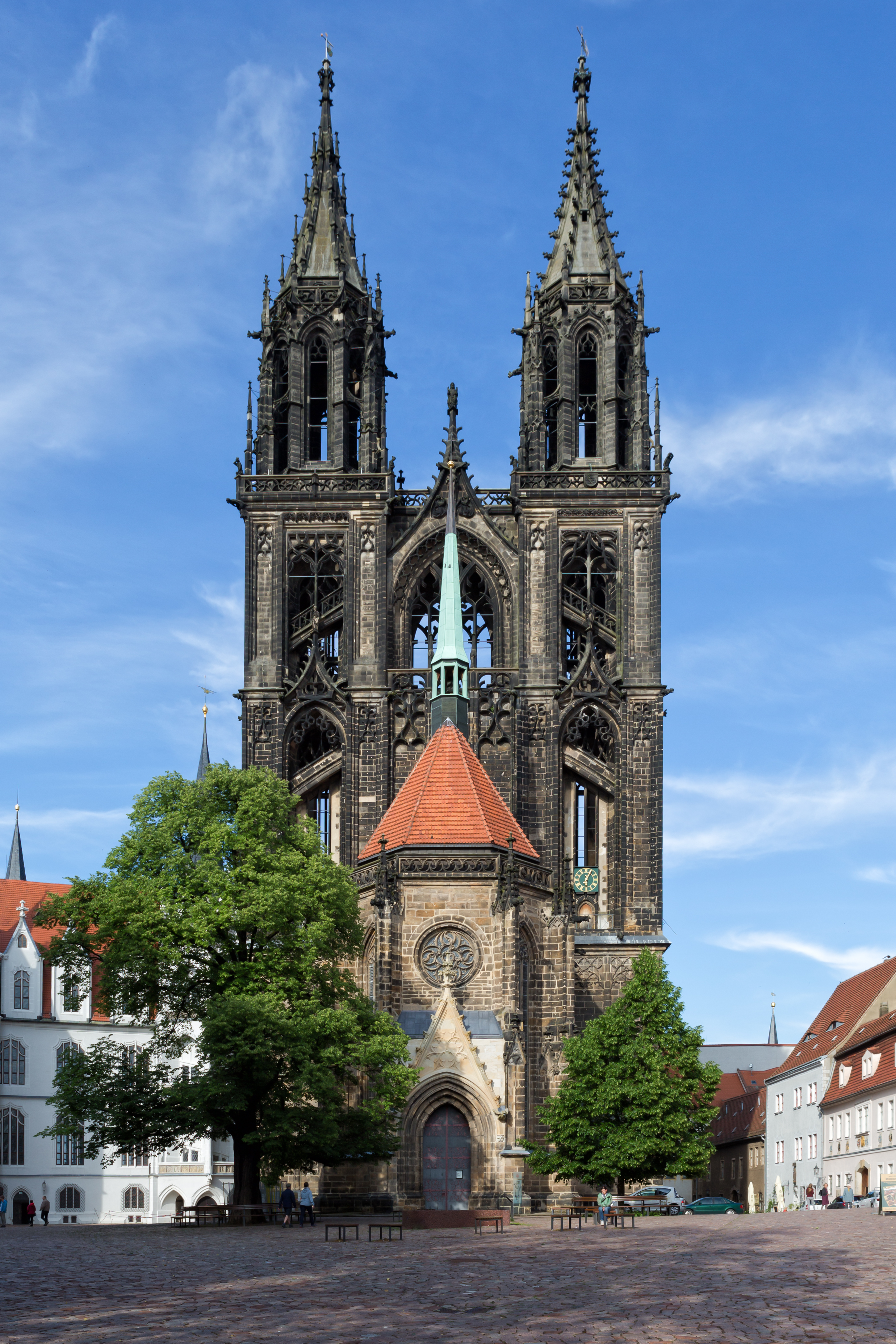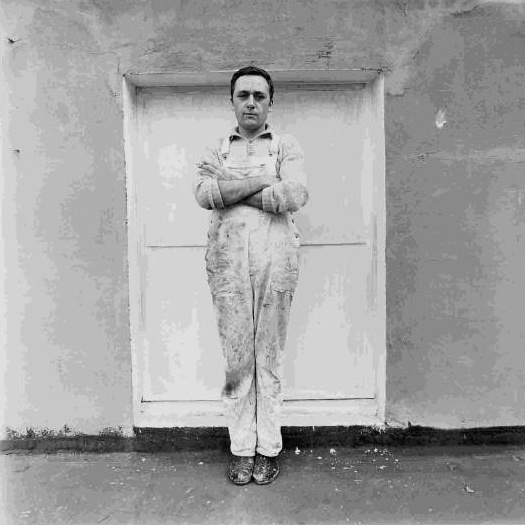|
Helmut Heinze
Helmut Heinze (born 24 April 1932) is a German sculptor. From 1979 to 1997 Heinze was professor for plastic arts at the Dresden Academy of Fine Arts. Life Heinze, son to a railwayman, was born in Mulda and raised in Dresden where he attended Volksschule and Oberschule. During his school time Heinze took drawing courses from Etha Richter.''Biographie.'' In: ''Helmut Heinze. Plastiken, Zeichnungen, Fundstücke.'' Ernst-Rietschel-Kulturring, Pulsnitz 1997. In 1950 Heinze began his studies at Dresden Academy of Fine Arts under Erich Fraaß und Walter Arnold. During this time he created his first graphics and plastics and met Gerhard Richter who studied in Dresden at the same time. Letters from Richter to Heinze dating back to ca. 1960 were acquired by the Gerhard Richter Archiv of Staatliche Kunstsammlungen Dresden in 2008. Heinze was introduced to Dresden based artists by Rudolf Nehmer and created a bust of Nehmer in 1957. In 1973 Nehmers integrated Heinze's sculpture ... [...More Info...] [...Related Items...] OR: [Wikipedia] [Google] [Baidu] |
Erich Honecker
Erich Ernst Paul Honecker (; 25 August 1912 – 29 May 1994) was a German communist politician who led the German Democratic Republic (East Germany) from 1971 until shortly before the fall of the Berlin Wall in November 1989. He held the posts of General Secretary of the Socialist Unity Party of Germany (SED) and Chairman of the National Defence Council; in 1976, he replaced Willi Stoph as Chairman of the State Council, the official head of state. As the leader of East Germany, Honecker had close ties to the Soviet Union, which maintained a large army in the country. Honecker's political career began in the 1930s when he became an official of the Communist Party of Germany, a position for which he was imprisoned by the Nazis. Following World War II, he was freed by the Soviet army and relaunched his political activities, founding the SED's youth organisation, the Free German Youth, in 1946 and serving as the group's chairman until 1955. As the Security Secretary of the SED C ... [...More Info...] [...Related Items...] OR: [Wikipedia] [Google] [Baidu] |
Etha Richter
Etha may refer to: * Saint Etha, an alternate name of the 5th-century Cornish Saint Tetha Tetha ( kw, Tedha; cy, Tedda), also known as Teath (), Tecla, and by a variety of #Name, other names, was a 5th-century consecrated virgin, virgin and list of Cornish saints, saint in Wales and Cornwall. She is associated with the parish churc ... * Etna, Nebraska, formerly known as "Etha" * ''Etha'' (wasp), a genus of wasps ETHA may refer to: * Altenstadt Air Base (ICAO code ETHA) Etha may refer to: Ethan {{Dab ... [...More Info...] [...Related Items...] OR: [Wikipedia] [Google] [Baidu] |
Villa Gustav Ziller
A villa is a type of house that was originally an Ancient Rome, ancient Roman upper class country house. Since its origins in the Roman villa, the idea and function of a villa have evolved considerably. After the fall of the Roman Republic, villas became small farming compounds, which were increasingly fortified in Late Antiquity, sometimes transferred to the Church for reuse as a monastery. Then they gradually re-evolved through the Middle Ages into elegant upper-class country homes. In the Early Modern period, any comfortable detached house with a garden near a city or town was likely to be described as a villa; most survivals have now been engulfed by suburbia. In modern parlance, "villa" can refer to various types and sizes of residences, ranging from the suburban semi-detached double villa to, in some countries, especially around the Mediterranean, residences of above average size in the countryside. Roman Roman villas included: * the ''villa urbana'', a suburban or co ... [...More Info...] [...Related Items...] OR: [Wikipedia] [Google] [Baidu] |
Erika Simmank-Heinze
Erika may refer to: Arts and Entertainment * Hayasaka Erika (''Megatokyo)'' * Erika (''Friends'') * Erika (''Pokémon'') * Erika (''Underworld'') * Erika Itsumi ''(Girls und Panzer)'' * ''Erika'' (film), a 1971 Italian thriller film * "Erika" (song), a German marching song People * Erika (given name), a female given name (including a list of persons and fictional characters with the name) * Érika (born 1988), female Brazilian footballer Science * Any of several tropical storms named Erika * ''Erika'' (moth), a genus of moth Other * , (ship) an oil tanker which sank off the coast of France in 1999 * ERIKA Enterprise, (software) an open source OSEK/VDX embedded operating system * Erika (law), maritime laws, legislative packages of the European Union See also * Erica (other) Erica or ERICA may refer to: * Erica (given name) * ''Erica'' (plant), a flowering plant genus * Erica (chatbot), a service of Bank of America * ''Erica'' (video game), a 201 ... [...More Info...] [...Related Items...] OR: [Wikipedia] [Google] [Baidu] |
Meissen Cathedral
Meissen Cathedral or the Church of St John and St Donatus (german: Meißner Dom) is a Gothic church in Meissen in Saxony. It is situated on the castle hill of Meissen, adjacent to the Albrechtsburg castle and forms a critical centrepiece of the iconic Meissen skyline overlooking the River Elbe in the valley below. History It was the episcopal see of the Bishopric of Meissen established by Emperor Otto I, Holy Roman Emperor, Otto I in 968. It replaced an older Romanesque architecture, Romanesque church. The present-day hall church was built between 1260 and 1410, the interior features Gothic sculptures of founder Emperor Otto and his wife Adelaide of Italy as well as paintings from the studio of Lucas Cranach the Elder. The first Saxon Prince-elector, elector from the House of Wettin, Margrave Frederick I, Elector of Saxony, Frederick I, had the Prince's Chapel erected in 1425 as the burial place of his dynasty. The twin steeples were not attached until 1909. In 1581 the Meissen ... [...More Info...] [...Related Items...] OR: [Wikipedia] [Google] [Baidu] |
Kreuzkirche, Dresden
The Dresden Kreuzkirche (Church of the Holy Cross) is a Lutheran church in Dresden, Germany. It is the main church and seat of the ''Landesbischof'' of the Evangelical-Lutheran Church of Saxony, and the largest church building in the Free State of Saxony. It also is home of the ''Dresdner Kreuzchor'' boys' choir. History A Romanesque basilica dedicated to Saint Nicholas had existed at the southeastern corner of the Dresden market since the twelfth century. A Side-chapel of the Cross, named after a relic bequeathed by the Meissen margravine Constance of Babenberg (1212–1243), was first mentioned in 1319. Over the decades, it became the name of the whole church, which was officially dedicated on 10 June 1388 to the Holy Cross. From 1401 it was rebuilt as a hall church with a prominent westwork in the German ''Sondergotik'' style. Based on the architectural works by Peter Parler (1330–1399), the construction later served as a model for numerous church buildings in Upper Saxony ... [...More Info...] [...Related Items...] OR: [Wikipedia] [Google] [Baidu] |
Werner Hempel
Werner may refer to: People * Werner (name), origin of the name and people with this name as surname and given name Fictional characters * Werner (comics), a German comic book character * Werner Von Croy, a fictional character in the ''Tomb Raider'' series * Werner von Strucker, a fictional character in the Marvel Comics universe * Werner, a fictional character in '' Darwin's Soldiers'' * Werner Ziegler, a fictional character from tv show Better Call Saul Geography *Werner, West Virginia * Mount Werner, a mountain that includes the Steamboat Ski Resort, in the Park Range of Colorado * Werner (crater), a crater in the south-central highlands of the Moon * Werner projection, an equal-area map projection preserving distances along parallels, central meridian and from the North pole Companies * Carsey-Werner, an American television and film production studio * Werner Enterprises, a Nebraska-based trucking company * Werner Co., a manufacturer of ladders * Werner Motors, an ea ... [...More Info...] [...Related Items...] OR: [Wikipedia] [Google] [Baidu] |
Rheinische Post
''Rheinische Post'' is a major German regional daily newspaper published since 1946 by the ''Rheinische Post Verlagsgesellschaft GmbH'' company, and headquartered in Düsseldorf. The Post is especially dominant in the western part of North Rhine-Westphalia. The Post's online platforms are called RP ONLINE and Tonight.de. History and profile ''Rheinische Post'' is one of the allied new foundations in the post-World War II era. NSDAP-opponents Karl Arnold, Anton Betz, Erich Wenderoth and (soon resigned) Friedrich Vogel received a British newspaper license. The newspaper was established in 1946 and belongs to the Arnold, Betz, Droste, Alt and Ebel families. It is part of the ''Rheinische Post Mediengruppe'' which also owns newspapers like the ''Saarbrücker Zeitung'', the ''Lausitzer Rundschau'' or the ''Trierischer Volksfreund''. The core distribution area stretches from the Bergischen Land to the Dutch border. There are 31 local editions, among them other regional newspapers, li ... [...More Info...] [...Related Items...] OR: [Wikipedia] [Google] [Baidu] |
Staatliche Kunstsammlungen Dresden
Staatliche Kunstsammlungen Dresden (, ''Dresden State Art Collections'') is a cultural institution in Dresden, Germany, owned by the State of Saxony. It is one of the most renowned and oldest museum institutions in the world, originating from the collections of the Saxon electors in the 16th century. Today, the Dresden State Art Collections consists of fifteen museums. Most of them are located in the Dresden Castle, the Zwinger and the Albertinum. History The museums belonging to the Staatliche Kunstsammlungen Dresden originated from the collections of the Saxon electors, several of whom were also Kings of Poland. Historical sources show that August I, Elector of Saxony, founded the electoral Kunstkammer (literally “art chamber”) in 1560, a collection of art located in the Dresden Castle. August the Strong and his son, August III, Kings of Poland, were important patrons and remarkable connoisseurs of the arts. They developed their art collections in a systematic fashion; ... [...More Info...] [...Related Items...] OR: [Wikipedia] [Google] [Baidu] |
Gerhard Richter Archiv
Gerhard is a name of Germanic origin and may refer to: Given name * Gerhard (bishop of Passau) (fl. 932–946), German prelate * Gerhard III, Count of Holstein-Rendsburg (1292–1340), German prince, regent of Denmark * Gerhard Barkhorn (1919–1983), German World War II flying ace * Gerhard Berger (born 1959), Austrian racing driver * Gerhard Boldt (1918–1981), German soldier and writer * Gerhard de Beer (born 1994), South African football player * Gerhard Diephuis (1817–1892), Dutch jurist * Gerhard Domagk (1895–1964), German pathologist and bacteriologist and Nobel Laureate * Gerhard Dorn (c.1530–1584), Flemish philosopher, translator, alchemist, physician and bibliophile * Gerhard Ertl (born 1936), German physicist and Nobel Laureate * Gerhard Fieseler (1896–1987), German World War I flying ace * Gerhard Flesch (1909–1948), German Nazi Gestapo and SS officer executed for war crimes * Gerhard Gentzen (1909–1945), German mathematician and logician * Gerhard A ... [...More Info...] [...Related Items...] OR: [Wikipedia] [Google] [Baidu] |
Gerhard Richter
Gerhard Richter (; born 9 February 1932) is a German visual artist. Richter has produced abstract as well as photorealistic paintings, and also photographs and glass pieces. He is widely regarded as one of the most important contemporary German artists and several of his works have set record prices at auction. Personal life Childhood and education Richter was born in Hospital Dresden-Neustadt in Dresden, Saxony, and grew up in Reichenau (now Bogatynia, Poland), and in Waltersdorf (Zittauer Gebirge), in the Upper Lusatian countryside, where his father worked as a village teacher. Gerhard's mother, Hildegard Schönfelder, gave birth to him at the age of 25. Hildegard's father, Ernst Alfred Schönfelder, at one time was considered a gifted pianist. Ernst moved the family to Dresden after taking up the family enterprise of brewing and eventually went bankrupt. Once in Dresden, Hildegard trained as a bookseller, and in doing so realized a passion for literature and music. Gerhard's ... [...More Info...] [...Related Items...] OR: [Wikipedia] [Google] [Baidu] |


